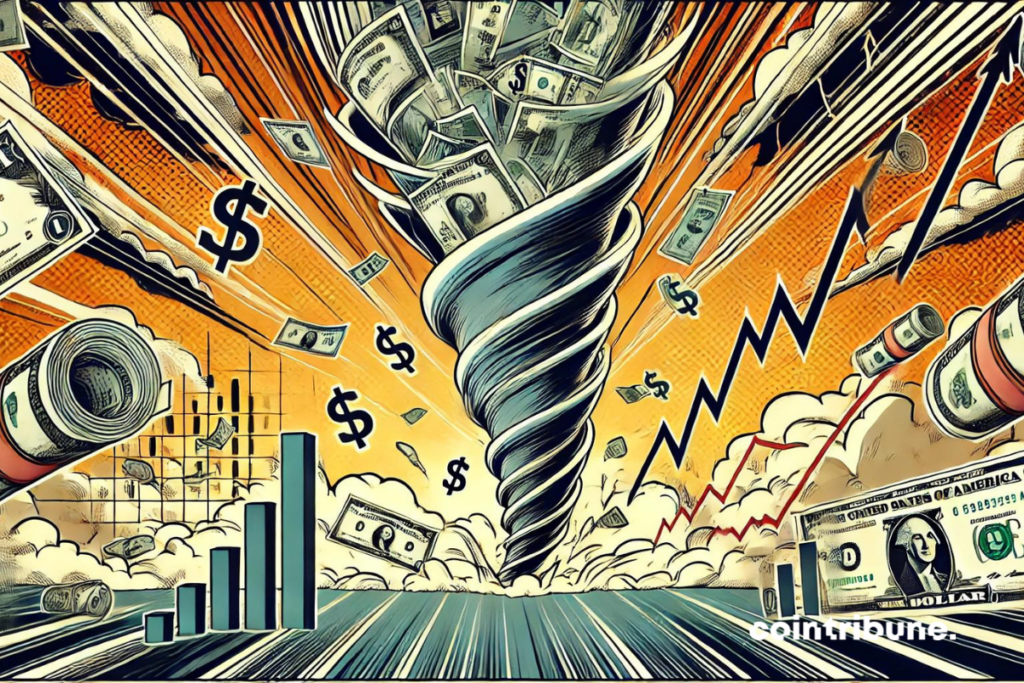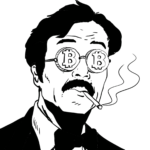The Fed Caves In and Vows to Lower Its Rates
All eyes were on Jackson Hole, where Jerome Powell, Chairman of the Fed, delivered his highly anticipated annual speech in the business world. Powell’s words indicated a new direction in the coming months: lowering rates after 2 years of monetary austerity. Such a decision could take markets to new heights!

An Unexpected Soft Landing
Contrary to pessimistic forecasts from two years ago, the American economy seems to have achieved what many considered impossible: a “soft landing.”
In August 2022, Powell warned that the fight against inflation would be “painful” for households and businesses, predicting a difficult period. However, reality turned out to be very different.
Inflation, which had reached alarming peaks, gradually decreased without the economy plunging into a recession.
The unemployment rate remains historically low at 3.5%, while economic growth has stayed above trend.
This outcome, described as “happy” by many economists, nevertheless raises fundamental questions about the mechanisms that allowed this disinflation without major slowdown.
The Fed now faces a delicate dilemma: how to calibrate its monetary policy to keep inflation close to its 2% target without risking an excessive cooling of the economy?
A Prolonged Landing for the Fed
According to some analysts, the American economy reached what they call “inflation target” in June 2023, when the monthly growth rate of the Core PCE price index fell to 2.09% annually.
Since then, the economy has continued its soft landing, which has now lasted for 14 months.
However, due to the long and variable delays in the transmission of monetary policy to the real economy, estimated at about fifteen months, the effects of the current Fed decisions will not be fully felt until much later.
This reality poses a major challenge for Fed policymakers.
The Fed Faces a Dilemma
A monetary policy is said to be “neutral” when the interest rates set by the central bank are at a level that neither stimulates nor slows the economy. In other words:
- A restrictive policy (high rates) slows down the economy
- An accommodative policy (low rates) stimulates the economy
- A neutral policy keeps the economy in balance
The “neutral rate” is the interest rate that neither accelerates nor slows down economic growth.
In the current context, the Fed has raised its rates to fight inflation, adopting a restrictive policy. The idea is that, even if the Fed starts to lower its rates, it will take time before these rates reach the neutral level, which is the level that no longer slows down the economy.
If the central bank starts reducing interest rates in September at 0.5 points per quarter, and if the real short-term neutral rate is 1.5%, it would take until July 2025 for monetary policy to be truly neutral, and October 2026 for this neutrality to fully impact the economy.
This prospect of a restrictive monetary policy potentially lasting 40 months after the start of the soft landing raises legitimate concerns.
Some economists believe this delay is strange and suboptimal.
The Fed and Lessons from History
Throughout his term, Powell has often relied on historical lessons to guide monetary policy, whether it was the great inflation of the 1960s or the Volcker disinflation of the 1980s.
In his 2018 speech, he emphasized the importance of being open-minded about the possible evolution of the economy’s structure, citing examples where the Fed either underestimated (in the 1960s) or overestimated (in the 1990s) inflationary risks.
Traditionally, there is an inverse relationship between inflation and unemployment, known as the Phillips curve. When unemployment is low, wages tend to rise, which can lead to an increase in inflation. Conversely, a higher unemployment rate can help control inflation.
Today, the central question is whether the Fed has “done enough” to sustainably bring inflation back to 2%.
If that is the case, any further increase in unemployment would have a social cost without any real advantage in terms of price stability.
However, it is impossible to answer this question with certainty, which places Powell in a delicate position as he prepares to guide the easing cycle.
The Fed Was Right About Transitory Inflation
In 2021, Powell called inflation “transitory”, a statement that was widely criticized when inflation continued to rise.
In retrospect, it appears that the Fed was right about the temporary nature of inflation, although it underestimated the time horizon.
This experience highlights the difficulty of accurately predicting inflation dynamics and the importance of a flexible and responsive approach to monetary policy.
Towards a Rate Cut in September
Several major challenges loom for the Fed in the coming months:
First, Powell took an important step by stating at Jackson Hole that “the time has come for a policy adjustment.” This announcement places the economy on the path to 2% inflation without prematurely claiming victory. His communication aims to anchor long-term inflation expectations and reassure markets, as evidenced by the positive reactions of U.S. stock exchanges following his speech.
Although Powell clearly opened the door to a rate cut, he gave no indication of the magnitude of this cut. Analysts mainly bet on a first cut of 0.25 percentage points in September, but some consider a more aggressive cut of 0.50 points.
The decision will depend on the assessment of the relative risks of inflation and economic slowdown.
The Fed Faces Major Challenges
The Fed must continue to juggle its two statutory objectives: price stability and full employment. Powell reaffirmed his support for American employment, declaring: “We will do everything in our power to support a strong labor market”.
Powell’s speech marks the beginning of a new era for American monetary policy, shifting from a period of aggressive tightening to a more nuanced phase.
Despite the apparent optimism of stock markets, which continue to reach new heights, Powell and his team must remain vigilant against the risk of a sharp correction.
The Fed will need to incorporate the lessons of this inflationary period into its long-term policy framework and potentially develop new tools to face future challenges.
International Implications
The Fed’s decisions have repercussions far beyond American borders.
Many emerging economies, in particular, are sensitive to fluctuations in U.S. interest rates. A too rapid easing could cause capital outflows from these countries, while a prolonged maintenance of high rates could hinder their economic growth.
Indeed, when U.S. rates drop, investments in the United States become less attractive. Investors then seek higher yields elsewhere, often in emerging economies. However, if this easing is too rapid, it can trigger a sudden outflow of capital from emerging economies.
In this context, international coordination of monetary policies, although difficult to implement, could become increasingly important.
Powell will probably have to consider this international dimension in his reflections, given the central role of the dollar in the global economy.
Jerome Powell’s speech at Jackson Hole marks a turning point in American monetary policy, signaling the end of tightening and the beginning of an easing phase. This transition reflects the Fed’s confidence in the return of inflation to 2%, while acknowledging persistent economic challenges. The Fed will now have to find a delicate balance between price stability and support for employment, in an uncertain economic context.
Maximize your Cointribune experience with our "Read to Earn" program! For every article you read, earn points and access exclusive rewards. Sign up now and start earning benefits.

Chaque jour, j’essaie d’enrichir mes connaissances sur cette révolution qui permettra à l’humanité d’avancer dans sa conquête de liberté.
The views, thoughts, and opinions expressed in this article belong solely to the author, and should not be taken as investment advice. Do your own research before taking any investment decisions.